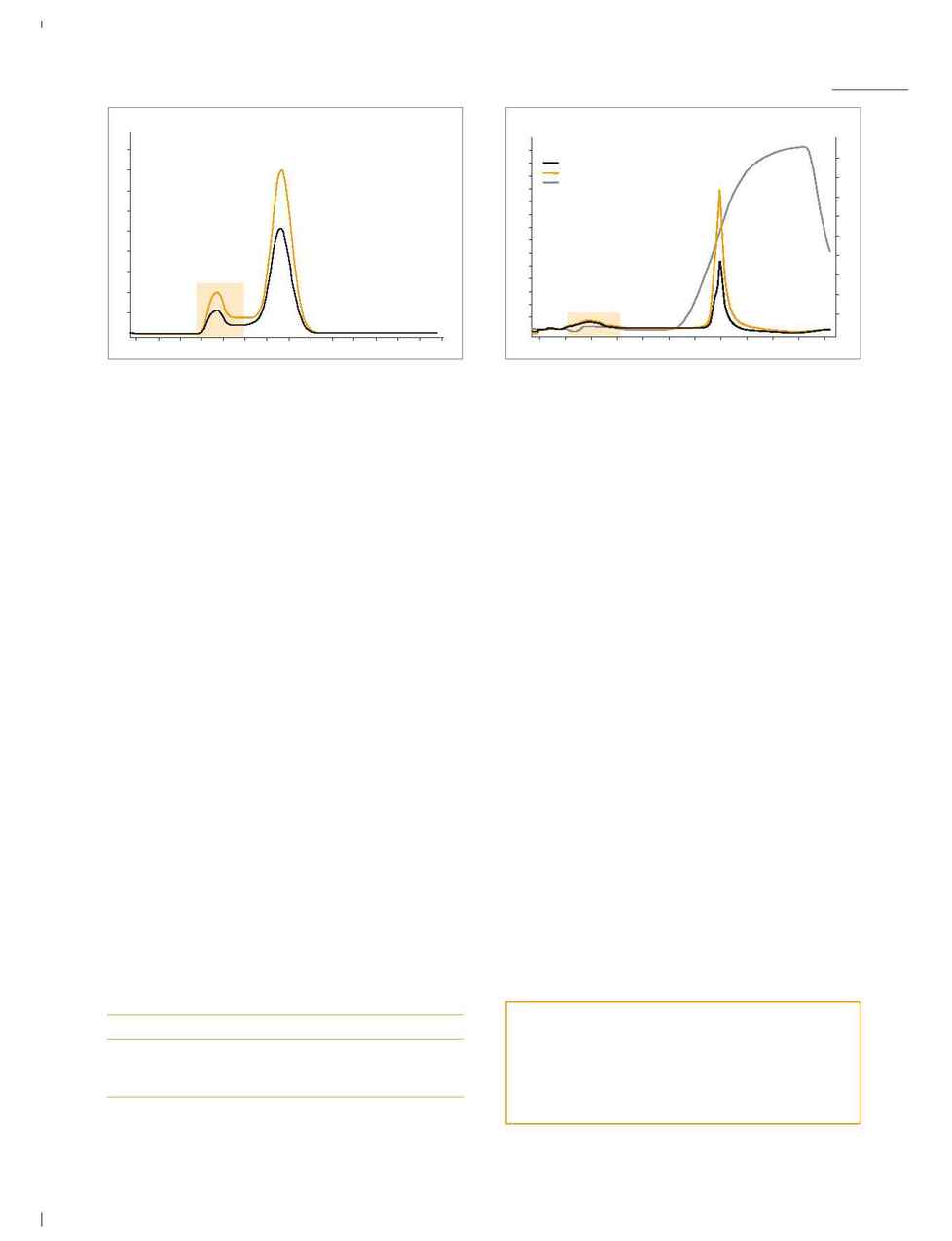
21
Downstream
thirty seven
Further reading
A.L. Van Wezel et al., Large scale concentration and purification of
virus suspension from microcarrier culture for the preparation of
inactivated virus vaccines, 2nd General Meeting of ESACT,
Paris 1978 42, 6569 (1978)
UV1_280nm
UV2_260nm
time
Hemagglutinin
activity
mAU
Sepharose 6 Fast Flow
time
mAU
mS/cm
Q Sepharose 6 Fast Flow
Hemagglutinin
activity
UV1_280nm
UV2_260nm
Cond
Sample preparation
The Vero cell culture was centrifuged and the supernatant
further clarified by two subsequent depth filtration steps.
After this pretreatment, human influenza virus was ready for
purification by ultrafiltration and chromatography.
Purification process
Pretreated supernatant was initially pre-purified and
concentrated by ultrafiltration using a MidGeeTM hollow-
fiber membrane cartridge with a nominal molecular weight
cut-off (NMWC) of 750 kDa. The retentate containing the
influenza virus was then purified by gel filtration in group-
separation mode on SepharoseTM 6 Fast Flow, whereby the
human influenza virus was found in the void volume (Figure 1).
Host cell molecules such as small DNA molecules and proteins
were retarded and eluted later during isocratic elution.
Final polishing was performed by anion exchange
chromatography on Q Sepharose Fast Flow in "negative"
mode: the human influenza virus was found in the flow-
through fraction while DNA molecules and other negatively
charged host cell molecules were bound on the column
(Figure 2). The final concentration and formulation of the
human influenza virus was performed via a second
ultrafiltration/diafiltration step on a MidGeeTM hollow-fiber
membrane cartridge with a NMWC of 750 kDa. Employing
this process, it was possible to obtain influenza virus material
which fulfils pharmaceutical requirements.
Human influenza virus quality
- Host cell proteins
n.d.
(1
/ dose
- Host cell nucleic acids
< 10 ng / dose
(2
- Infectivity
Same as Sucrose-gradient purified
1) n.d. = not detectable
2) dose = 45 µg HA antigen (antigen quantified by immunoassay)
Cleaning-in-place
After each run both columns were cleaned with sodium
hydroxide (NaOH) and sodium chloride (NaCl). Tightly
bound host cell nucleic acids were removed from
Q Sepharose 6 Fast Flow during this step. The hollow-fiber
membrane cartridges were cleaned using 0.5 M NaOH.
Rapid and scalable
This purification procedure can be performed with standard
downstream process equipment and completed within one
day. The method is scalable and includes cleaning-in-place
procedures using 0.5 M NaOH and 2 M NaCl.
Comments
This combination of membrane and chromatographic
separation is well suited to viral vaccines. The open flow
path of the hollow-fiber crossflow membranes promotes
gentle handling of virus particles and shear sensitive proteins.
In addition, human influenza virus is not specifically bound
to the chromatography column. This makes the downstream
process very applicable for sensitive molecules and, what is
more, it will probably work for any strain of human
influenza virus. For this reason, the process could be called
generic for human influenza virus purification.
Fig. 1. Group separation chromatography on Sepharose 6 Fast Flow.
Fig. 2. Pooled void volume from group separation was further purified by
negative anion exchange chromatography on Q Sepharose
Fast Flow.
